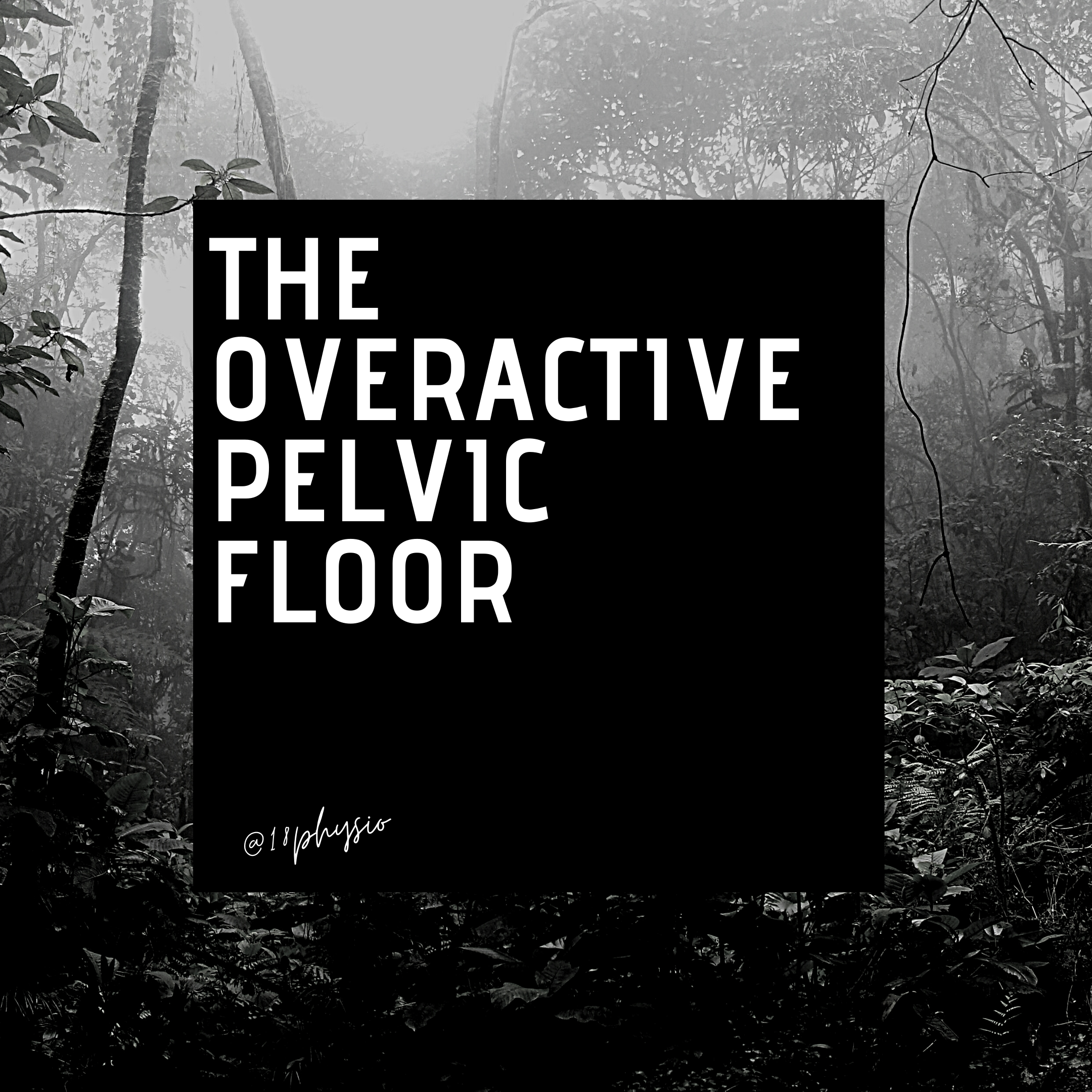WHY: Understanding the Overactive Pelvic Floor.
What is overactive pelvic floor?
Overactive pelvic floor is defined by the ICS as a situation where the pelvic floor muscles do not relax properly, or may contract when relaxation is required. The condition presents with a number of symptoms of poor pelvic floor relaxation including issues emptying your bladder / bowel and sexual pain.
Overactive pelvic floor is often associated with high resting muscle tone of the pelvic floor muscles.
Here are a few analogies to help you understand this better:
Imagine that you are holding a heavy box all day. You go about your day to day activities holding this box. When you put the box down at the end of the day and try to straighten your arm it is difficult and painful to do as the muscle has been active all day. You then decide you need to lift the box to put it away, but you find that difficult too, because the arm has been working all day and is fatigued, tired and weak.
Imagine walking around on your tippy toes all day. When you go to lower your heals down at the end of the day, this is likely to feel painful, tight and difficult to do. Additionally, when you then want to go run or jump and use your calf muscles functionally, they are tired and are not working optimally.
Imagine you are clenching your jaw or grinding your teeth. The muscles around your jaw and neck are likely to tense and tighten, which may lead to pain in the jaw or head.
This is similar to what may occur with an overactive pelvic floor. The muscle may be subconsciously activated throughout the day, and an array of symptoms may arise due to this.
Individual’s with overactivity of their pelvic floor may present with different symptoms. The common symptoms include:
- Pelvic pain. This includes pain in the pelvic / genital regions (inner thigh, hamstring, gluteal muscles, low back, abdomen, coccyx, genitals).
- Painful intercourse.
- Pain with internal vaginal assessments.
- Pain inserting tampons or menstrual cups.
- Difficulty gaining / maintaining erections.
- Premature ejaculation.
- Difficulty / incomplete emptying your bladder or bowel.
- Slow urinary flow. Note: In males this may also be due to prostate enlargement / obstruction.
- Pain with emptying your bladder or bowel.
- Urgently needing to urinate.
- Feeling of needing to urinate constantly.
- Bladder pain.
- High urinary frequency.
- Loss of bladder or bowel control.
- Inability to feel a pelvic floor contraction or relaxation.
How does overactivity of the pelvic floor develop?
There are a few reasons as to why overactivity may develop. Everyone presents differently, and it is therefore important to have an individualised assessment as to why you may have developed overactivity. However, common reasons include:
- Poor holding postures – Some people are taught from a young age to “suck in their abdominals” which can lead to gripping of the abdominal, gluteal (bottom) and pelvic floor muscles. This does not allow for the muscles to relax properly, as they are constantly activated.
- Stress – Increased muscle tension may be held in response to stress.
- Trauma – Direct trauma to the area can cause the pelvic floor muscles to tighten in response to the pain. This may be physical trauma and / or emotional trauma.
This includes birth trauma, including perineal tearing or episiotomy. - Injury – Injury of the structures around the pelvis (e.g. low back, hip, groin, coccyx or abdominals) can cause the pelvic floor muscles to grip in response.
- Bladder or bowel urgency – If you have urgency to empty your bladder or bowel, your muscles may activate to avoid loss control. In some people if they are doing this too often the muscle tone can become overactive.
- Recurrent bladder infections or chronic thrush.
- Pelvic surgery.
- Pelvic health conditions – For example, endometriosis, IBS or IC.
WHY see a physiotherapist if you think you have overactivity?
It is important to have an individualised and personalised program to improve your muscle tone. This will allow the pelvic floor muscle to start performing in a more optimal way, improving your symptoms.
What will physiotherapy treatment include:
This is always individualised, however you can generally expect:
- Education of the pelvic floor muscles and their function.
- Education on overactive pelvic floor.
- Techniques to facilitate improved pelvic floor muscle relaxation. This may include pelvic floor muscle down training, diaphragmatic (belly) breathing or biofeedback (real time ultrasound).
- Techniques to improve your bladder or bowel emptying.
- Manual muscle release techniques to improve the muscle tone and blood flow to the area. This may be external or internal.
- Therawand or dilator for self-release at home.
- Stretching techniques.
- Strengthening of weak musculature.
For further information, if you have any questions or if you believe you have overactive pelvic floor please be in touch and I am always happy to help
0458789818
Jess ?
Ref: Messelink B, Benson T, Berghmans B, Bø K, Corcos J, Fowler C, Laycock J, Lim PH, van Lunsen R, á Nijeholt GL, Pemberton J, Wang A, Watiert A, Van Kerrebroeck P Standardization of terminology of pelvic floor muscle function and dysfunction: Report from the Pelvic Floor Clinical Assessment Group of the International Continence Society. Neurol Urodyn 2005;24(4) 374-380.

